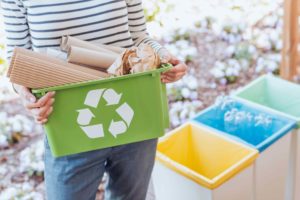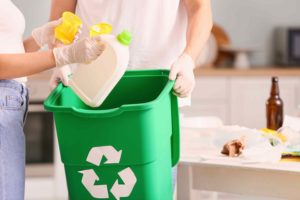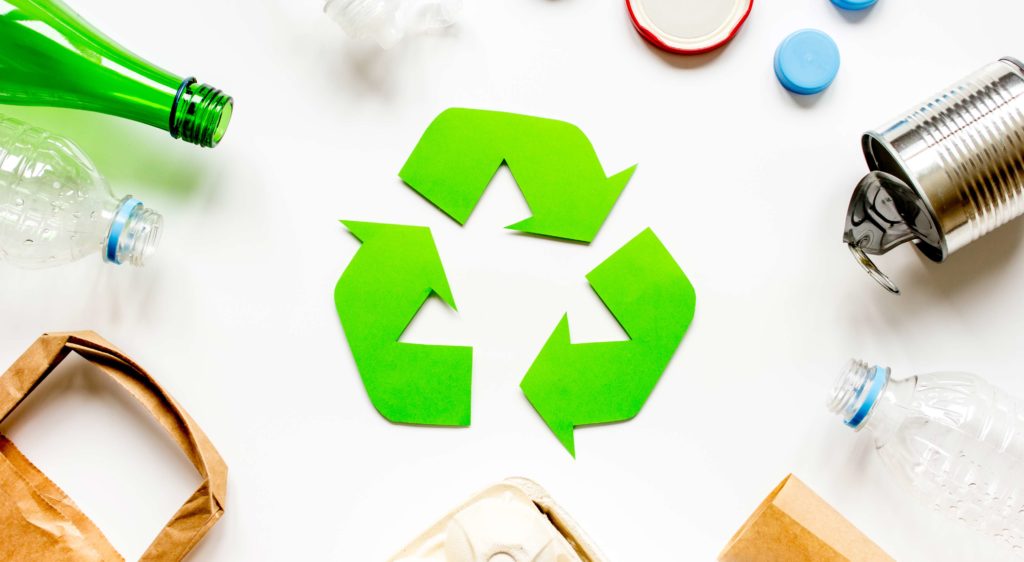 When it comes to managing your waste and recycling, you might find yourself confused—after all, people don’t often have time to examine the contents of their waste bins. The problem is there remains plenty of grey areas in the way we view and deal with solid waste with waste prevention still something of an overlooked topic for many. These practices, compounded by a huge range of different types of trash and methods of disposal (often varying by municipality), in tandem with an industry that has historically been fragmented, make it extremely difficult to know what goes where and why.
When it comes to managing your waste and recycling, you might find yourself confused—after all, people don’t often have time to examine the contents of their waste bins. The problem is there remains plenty of grey areas in the way we view and deal with solid waste with waste prevention still something of an overlooked topic for many. These practices, compounded by a huge range of different types of trash and methods of disposal (often varying by municipality), in tandem with an industry that has historically been fragmented, make it extremely difficult to know what goes where and why.
However, it’s becoming increasingly clear that a long hard look at our waste generation habits is exactly what we need to do to mitigate climate change by reducing greenhouse gasses, conserving our natural resources, and ensuring the planet is viable for future generations. Today, waste prevention should be at the front of our minds, and as global waste generation continues to rise, clarifying some of the most important concepts and systems that underpin our efforts to reduce waste is a key step for us all, allowing us to reduce our environmental impact by making a few lifestyle changes.
In short, to successfully manage waste and work towards its reduction, everyone needs to be on the same page. We need to know the best ways to deal with and dispose of the things we consume—and we all need to remember that there is no such thing as “away” when dealing with trash.
So, if you’re still trying to recycle Pringles tubes, if you’re dumping food waste in the garbage, or you still don’t understand what to do with your old electronics, we break down two key terms to help you gain more insight into that elephant in the room—Zero Waste vs. Recycling. Read on to learn the differences and discover how both are contributing to a more circular economy that generates less waste.
Zero waste vs. recycling – What’s the difference?
 There’s plenty of confusion when it comes to the zero waste vs recycling question, and part of that is due to the fact that they present a degree of overlap. The bottom line is that recycling is part of the zero-waste concept, but zero waste is not necessarily a part of recycling.
There’s plenty of confusion when it comes to the zero waste vs recycling question, and part of that is due to the fact that they present a degree of overlap. The bottom line is that recycling is part of the zero-waste concept, but zero waste is not necessarily a part of recycling.
The goal of zero waste is much broader than recycling, aiming to reduce or eliminate waste at the source rather than deal with it later. It also aims to increase circularity across production systems, making everyone involved with a particular product (or service) responsible for potential waste and its integration back into the loop.
In essence, zero waste focuses on product design, examining where waste can be eliminated through a hierarchal set of principles: “Rethink, Reduce, Reuse, and Recycle”—In that particular order. It is also very much concerned with, as quoted by the Zero Waste International Alliance:
“The conservation of all resources by means of responsible production, consumption, reuse, and recovery of products, packaging, and materials without burning and with no discharges to land, water, or air that threaten the environment or human health.”
Recycling is a part of the zero-waste hierarchy, although low on the list of priorities since the zero-waste concept aims to eliminate waste rather than deal with it. Recycling still has a big part to play in the way we manage waste—both now and in the future, with recyclable materials playing their part in reducing waste and valuing resources.
Recycling systems and composting are designed to take waste products and turn them into something useful. As a concept, it’s an excellent idea, helping us to reclaim materials after use, however, the sheer range of different materials and products in use today means that recycling has inefficiencies and operational challenges. In addition to this, municipalities from New York to San Francisco all approach recycling in a slightly different way, meaning that what consumers and businesses can recycle varies from city to city.
In terms of recycling, resources are also expended at both ends of a product’s lifecycle, i.e. those used in manufacturing and those used during end-of-life-processing. This stands in stark opposition to the zero-waste concept that aims to conserve resources at the manufacturing stage and then integrate them seamlessly back into the loop—completely avoiding “end of life” wherever possible.
In short, recycling is behind in its capacity to deal with both waste already in existence and of that being created daily. However, it remains an important function for the way we currently deal with waste, and municipalities across the US are increasing recycling capacities for everything from plastic waste to electronics.
Is recycling zero waste?
 In some cases, recycling can be considered zero waste. Composting, for example, is among the most efficient forms of recycling out there, taking true-waste organics such as garden cuttings or vegetable scraps and turning them into nutrient-rich compost. The entirely natural processes it relies on turn waste into something of equal value—a compostable closed loop that keeps resources viable for human usage infinitely as they cycle around from food to compost and back again.
In some cases, recycling can be considered zero waste. Composting, for example, is among the most efficient forms of recycling out there, taking true-waste organics such as garden cuttings or vegetable scraps and turning them into nutrient-rich compost. The entirely natural processes it relies on turn waste into something of equal value—a compostable closed loop that keeps resources viable for human usage infinitely as they cycle around from food to compost and back again.
Unfortunately, when it comes to manmade materials, the same is not true. Single-use plastics, for example, cannot be considered zero waste as the material produced after recycling is of a lesser quality than the original. The same is true for paper and cardboard, and while aluminum and glass are theoretically infinitely recyclable into a material of the same quality, inefficiencies in sorting and processing often lead to contamination.
Zero-waste living and recycling
 Whether you’re striving for a zero-waste home or focusing on waste reduction in your business, the reality is that today’s waste management is reliant on recycling to deliver at least a basic level of circularity. However, there are many products that can simply be eliminated without the need of creating expensive recycling systems.
Whether you’re striving for a zero-waste home or focusing on waste reduction in your business, the reality is that today’s waste management is reliant on recycling to deliver at least a basic level of circularity. However, there are many products that can simply be eliminated without the need of creating expensive recycling systems.
Plastic bags are a good example, and while limited recycling facilities do exist, it is simply easier to move away from their use and prioritize the development of new products that are reusable or biodegradable. Ideas such as these are very popular within the zero-waste lifestyle movement, and as consumer demand and concepts such as extended producer responsibility begin to dictate zero-waste strategies, better product design will lead to less reliance on waste systems such as recycling.
The push to bring more awareness to our waste generation habits and the types of materials we consume means that we should all be on the journey towards zero-waste living. Rethinking the resources used in production, reducing the subsequent waste we create, reusing and repairing the products we can, and finally, recycling anything left over is the best way to access the many benefits of the zero-waste movement—allowing everyone to reduce landfill waste to zero!
Both the ZWIA website and the EPA’s Transforming Waste Tool are extremely useful tools in the fight against waste. Additionally, subscribe here and stay in the loop to learn more about how you and your business can continue to strive towards zero waste principles.

